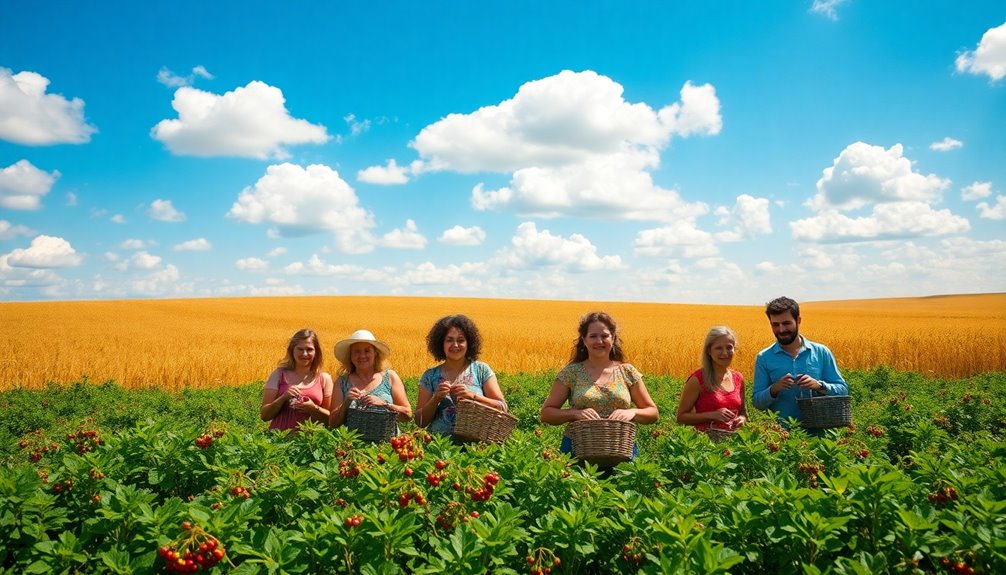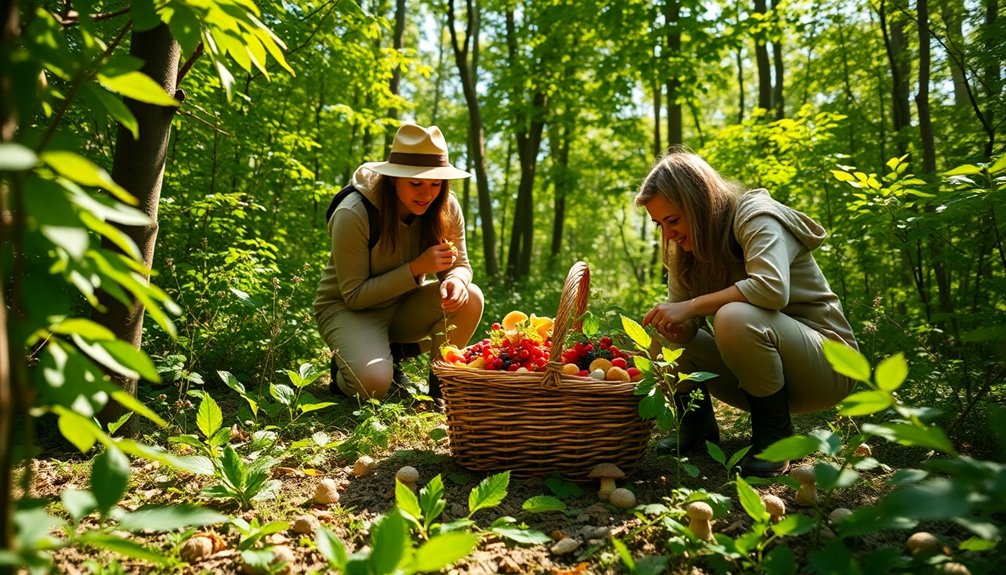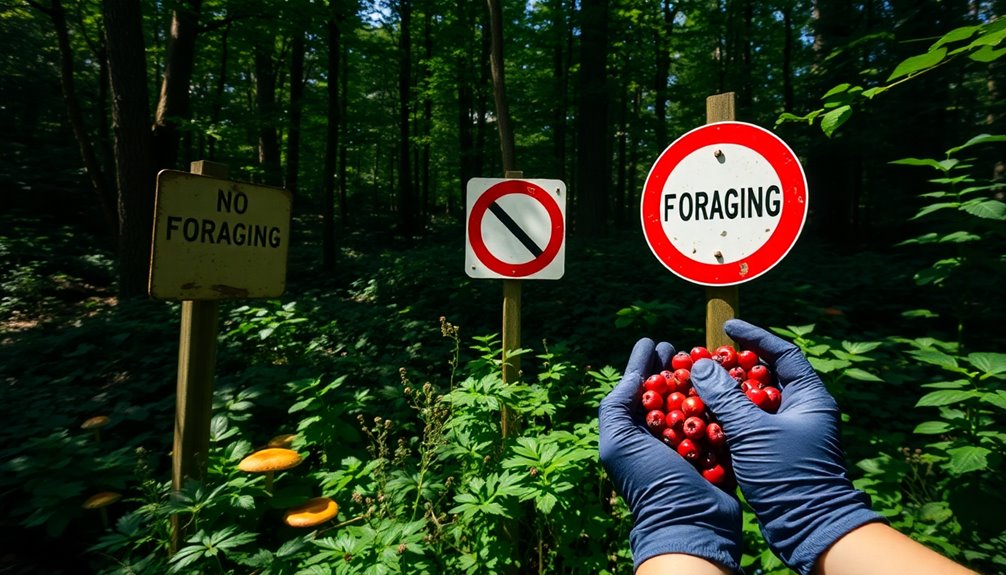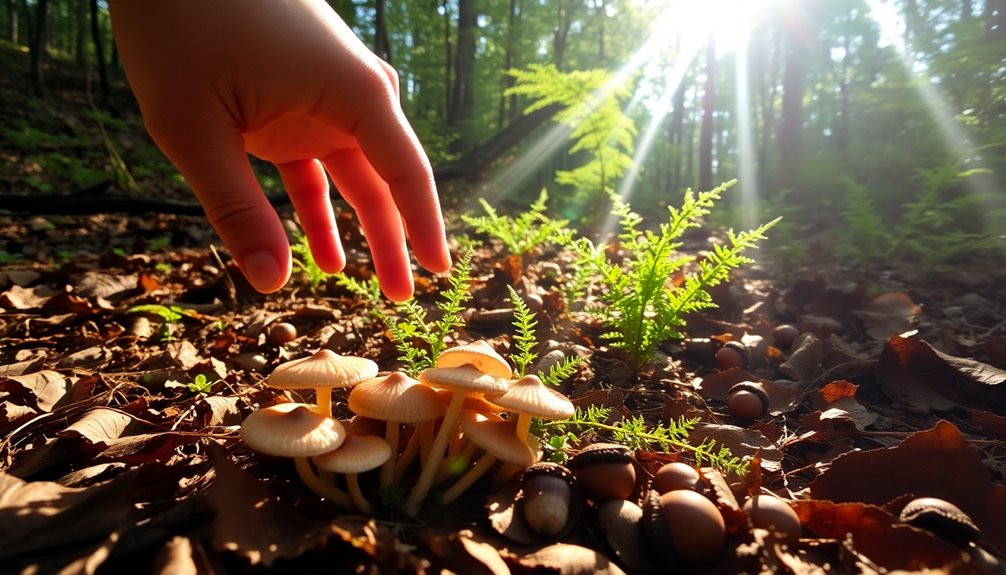Foragers began turning to agriculture due to rising population pressures, environmental changes, and intense competition for resources. As communities grew, sustaining wild food became harder, creating urgency for reliable food sources. Scarcity of wild resources pushed foragers to explore farming methods, ensuring more predictable food supplies. Cultural shifts accompanied this change, revealing how food influences social structure and identity. Understanding these factors highlights the complex interplay between societal needs and environmental pressures. If you're curious about the deeper motivations behind this shift, there's so much more to uncover about the evolution of human food practices.
Key Takeaways
- Increased population density creates a demand for reliable food sources, pushing communities to adopt agriculture for sustainability.
- Resource competition and environmental pressures, such as climate change, lead to food scarcity, prompting a shift from foraging to farming.
- Scarcity of wild food resources forces foragers to seek predictable agricultural methods for survival.
- Cultural identities and economic factors influence dietary choices, driving communities toward agricultural practices to align with evolving social values.
- Historical evidence shows that foraging becomes unsustainable beyond certain population densities, necessitating a transition to agriculture for community survival.
Evolution of Food Preferences
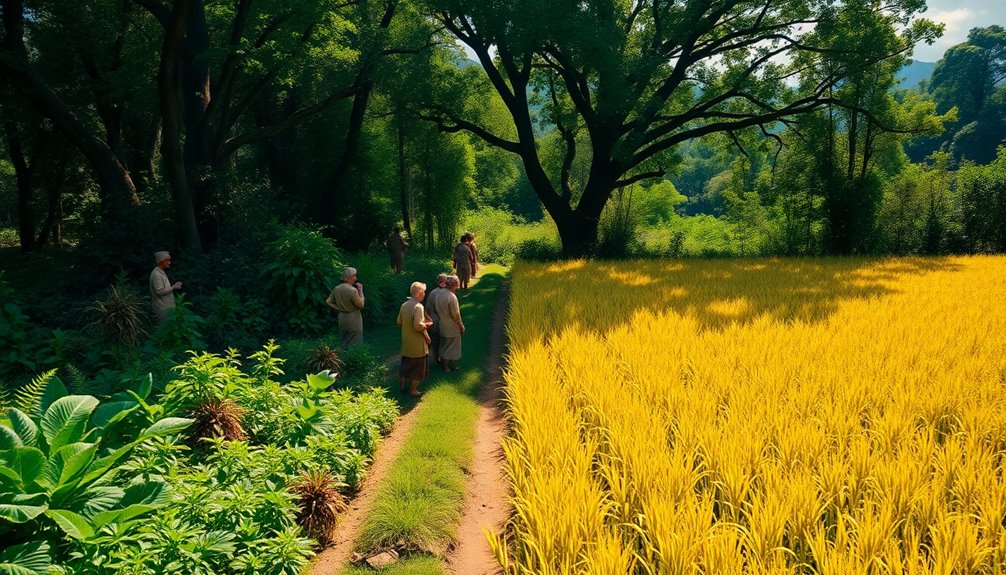
Throughout history, food preferences have evolved dramatically, often reflecting cultural shifts and economic changes. As you explore this fascinating evolution, you'll notice how societal factors, like population density, play an essential role. In densely populated areas, the demand for food has led communities to prioritize certain edible plants over others, shaping what's deemed desirable or luxurious.
For instance, consider how lobster and chicken wings transformed from being considered poor people's food to status symbols. This shift illustrates how perceptions of food can change in just a few decades, influenced by societal priorities and economic realities.
Anthropologists highlight that food preferences aren't just about nourishment; they intertwine with identity and cultural values. As communities adapted to agriculture and new farming techniques, they began to cultivate a wider variety of edible plants, further influencing what people find appealing. Additionally, the rise of self-care and mindfulness has encouraged individuals to prioritize health-conscious food choices, further altering preferences.
In this dynamic landscape, the cultural significance of food aligns closely with social status, revealing how food choices reflect broader societal norms. Understanding these changes provides insight into how food shapes both individual and community values, revealing a rich tapestry of human experience.
Transition From Foraging to Agriculture
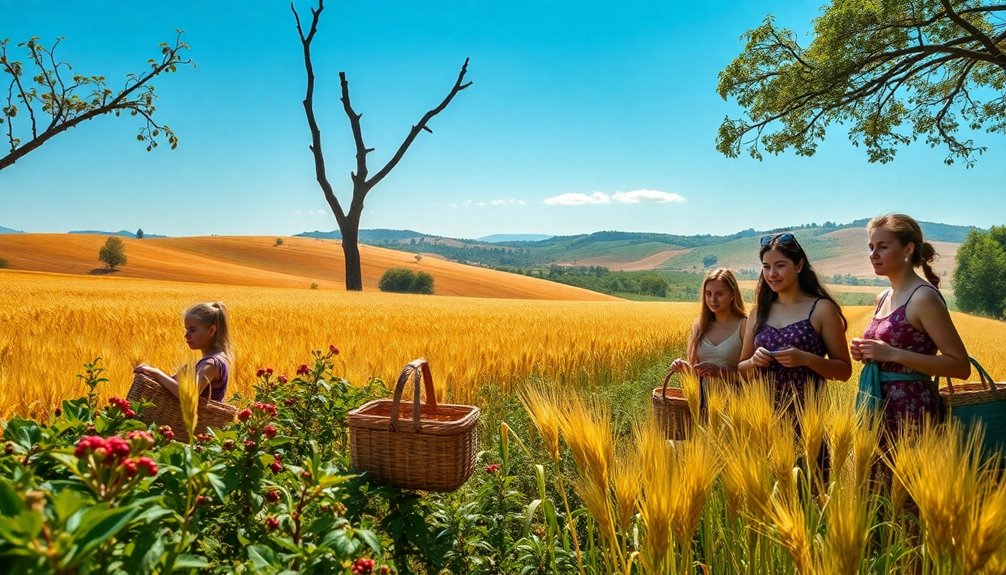
As populations grew, you started to notice the competition for resources intensifying.
This shift pushed communities to seek more reliable food sources, leading to the rise of agriculture about 10,000 years ago.
In this new reality, the way you approached food and settlement changed dramatically.
Population Density Increase
Increased population density often sparks a critical change from foraging to agriculture, as communities face the challenges of resource competition. As your group grows, the demand for food intensifies, leading you to seek more stable food sources than what foraging can provide. This change isn't just a random choice; it's a necessary adaptation to survive.
- Food security becomes a priority.
- Larger populations require reliable sustenance.
- Agricultural practices support permanent settlements.
Archaeological evidence suggests that in regions where foraging dominated, the shift to agriculture often unfolded within just a few generations as environmental pressures mounted. As you recognize the advantages of cultivating specific crops, particularly in areas with fertile land and favorable climates, it becomes clear that agriculture can sustain your growing community far better than wild resources alone. This newfound ability to support larger populations also paves the way for complex social structures, transforming the dynamics of your group.
Ultimately, the increase in population density not only drives this change but reshapes your society, allowing you to thrive in a world of resource competition. Additionally, the establishment of permanent settlements fosters opportunities for enhanced social interactions, which can further strengthen community bonds and cooperation.
Resource Competition Factors
Resource competition becomes a pressing issue as communities grow, pushing foragers to contemplate agriculture as a viable alternative. As population density increases, the demand for resources intensifies, leading to overexploitation of foraging areas. When food sources dwindle, foraging societies begin to see agriculture not just as an option, but as a necessity to meet their needs.
The carrying capacity of the land, which determines how many people it can support, plays an essential role in this shift. As the natural resources become scarce, you might find neighboring groups competing for the same land and food supplies. This competition can prompt you and your community to settle down and cultivate crops, ensuring a more stable food supply.
With agriculture, you gain greater control over food production, allowing you to support larger populations than foraging alone would permit. The shift to farming also reflects broader societal changes, as cultural values and economic pressures drive the need for more intensive food production.
Ultimately, resource competition highlights the challenges faced by foragers, steering them towards agriculture as a sustainable solution for their growing communities.
Impact of Population Density
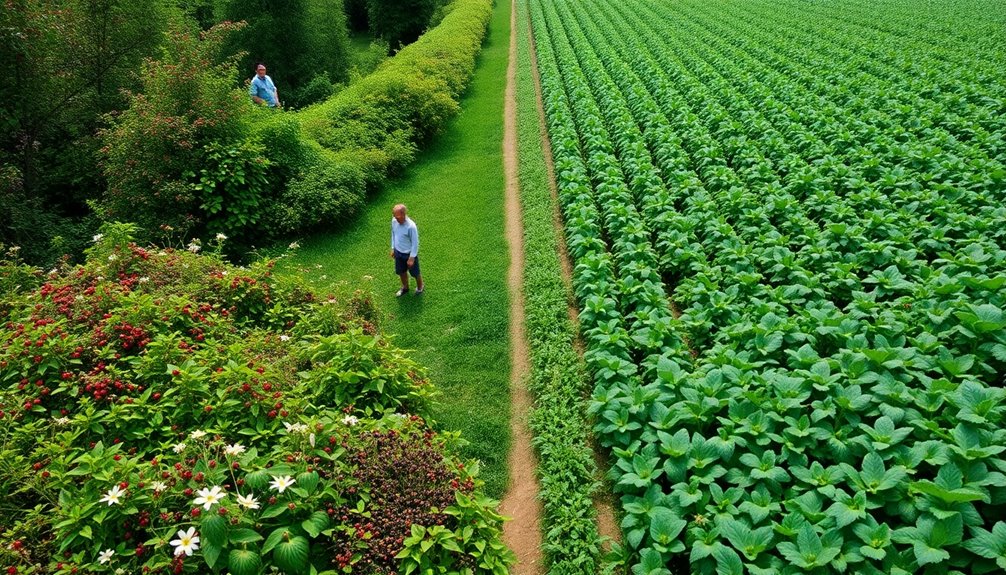
Population density plays an essential role in shaping the change from foraging to agriculture. As the population within foraging communities increases, the availability of wild resources often becomes insufficient to sustain larger groups. This conversion is influenced by several key factors:
- Increased competition for food resources
- The need for a reliable and consistent food supply
- Changes in social organization and mobility
When population densities rise above five people per square mile, foraging becomes less sustainable. You may find that as more individuals compete for the same resources, the pressure to secure food intensifies. This situation drives foraging communities to adopt agriculture, allowing them to cultivate crops and domesticate animals to meet their growing needs.
Historical evidence highlights this transformation. As populations expand, the necessity for a more sedentary lifestyle emerges to support larger communities.
The Green Revolution of the 1940s also underscores how technological advancements in agriculture were developed in response to increasing population densities, further solidifying this change.
Ultimately, you can see that population density is a significant factor in the evolution from foraging to agricultural societies.
Cultural Significance of Food
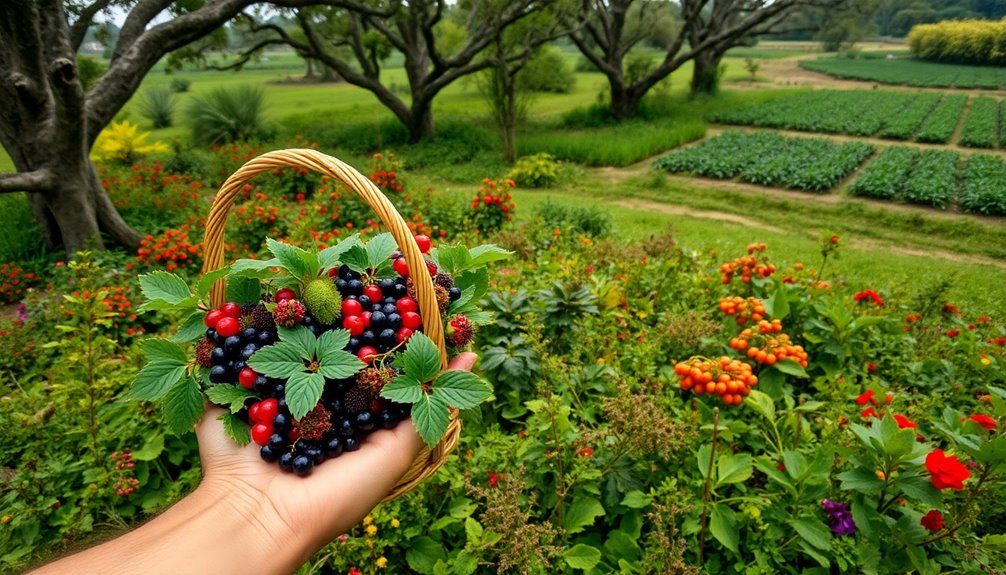
As you explore the cultural significance of food, you'll notice how food values shift alongside economic changes, turning everyday items into symbols of status.
These transformations reflect deeper connections to social identity, where what you eat can signify ethnicity, age, or gender. For example, the incorporation of anti-inflammatory foods in various diets illustrates how health trends can influence cultural food practices. Additionally, the role of mental clarity in choosing healthier foods highlights the intersection of health and culture in modern diets. Furthermore, the use of educational toys in early childhood development parallels how cultural values can shape the choices we make regarding health and nutrition. The recognition of the importance of early detection in health practices also underscores how cultural attitudes towards health can evolve over time. Understanding this relationship helps you appreciate how food practices shape communities and personal identities over time. For instance, the high sugar content in popular snack foods has been linked to changing dietary preferences and health concerns in various cultures.
Evolving Food Values
Food preferences aren't set in stone; they shift and evolve as cultures change. As you dig deeper, you'll find that the cultural significance of food often reflects broader societal values and consumption patterns.
Consider how items once deemed poor people's food, like lobster and chicken wings, can become luxury items over time.
- The status of certain foods can change rapidly, sometimes within just a few decades. For instance, the rise of low-calorie diets has influenced the popularity of certain foods in contemporary culture. Foods rich in vitamins, like celery juice, are now celebrated for their health benefits, emphasizing the importance of nutrition in modern dietary choices.
- Political and economic processes shape dietary customs and access to food, similar to how merchant services influence business growth and sales.
- Food practices serve as identity markers, revealing ethnicity, age, and gender in a community.
In today's world, climate change also plays a role in redefining food values. As environmental conditions affect the availability of wild foods, people adapt by altering their dietary preferences and practices.
The meaning and value you attribute to specific foods can shift, mirroring your community's evolving identity. This fluidity highlights the interconnectedness of food, culture, and societal change, reminding you that what's considered valuable or desirable can transform dramatically over time.
Understanding these evolving food values helps illuminate why foragers might eventually turn to agriculture. Additionally, as people pursue their desired food experiences, they may also find themselves applying visualization techniques to enhance their connection with food and its cultural significance.
Economic Influences on Diet
Many people may not realize how deeply economic factors shape dietary choices and food culture. The shift from foraging to agriculture illustrates this, as increased population density and competition for resources drive communities to seek sustainable food sources. Economic influences on diet are evident in how certain foods evolve in status. For instance, lobsters and chicken wings once labeled as poverty foods are now luxury items.
| Food Item | Economic Status |
|---|---|
| Lobster | From poverty to luxury |
| Chicken Wings | From casual to gourmet |
| Quinoa | From staple to superfood |
The Green Revolution further highlights these dynamics, introducing high-yield crops to enhance food security in developing regions. Additionally, the rise of coffee alternatives reflects changing consumer habits as people seek healthier options. Economic systems and political processes dictate not just what is produced but also how food is distributed. This interplay emphasizes the importance of private property, which can restrict access to resources and dictate dietary preferences. Ultimately, the cultural significance of food extends beyond nutrition; it reflects social status and community values, showcasing how deeply intertwined food is with economic realities. Moreover, the production of renewable energy sources can influence agricultural practices and food availability, further impacting dietary choices. Additionally, the increased adoption of solar energy solutions can help reduce energy costs in agricultural production, leading to more sustainable farming practices. Furthermore, the rise of plant-based spreads in consumer preferences showcases the ongoing evolution of food choices influenced by economic factors. In this context, the growing importance of blockchain technology offers new ways to ensure transparency in food supply chains, potentially impacting consumer trust and choices.
Social Identity Through Food
Understanding the cultural significance of food reveals how it shapes social identities within communities. Food isn't just sustenance; it's a powerful marker of who you're and where you belong. Your food preferences signal aspects of your social identity, often indicating your ethnic group, age, or gender.
Consider these key points:
- Cultural Heritage: Traditional dishes, like frybread, can symbolize love and family despite their nutritional drawbacks. Additionally, many Indigenous communities incorporate traditional healing practices into their food culture, emphasizing the deep connections between food and well-being. The notion of community identity is deeply intertwined with the food shared among members, reflecting collective values and histories. Furthermore, the availability of nectar sources from plants like gorse can influence local food practices, as they support bee populations vital for pollination. In this context, understanding foraging range is crucial, as it affects how communities access and utilize local food resources.
- Economic Shifts: Foods like lobster and chicken wings show how economic changes can elevate what was once considered "poor people's food" to luxury status.
- Community Bonds: Seasonal practices, such as "when the tide is out, the table is set," highlight how local foodways reinforce community identity.
In various cultures, food practices are more than just meals; they strengthen social bonds and preserve cultural heritage. Foraging, sharing, and cooking together build connections and create a sense of belonging. Additionally, the incorporation of traditional food practices can enhance the social experience and foster deeper connections within communities.
As you explore your own culinary traditions, remember that the food you share plays a significant role in defining your social identity within your community.
Environmental Factors in Subsistence
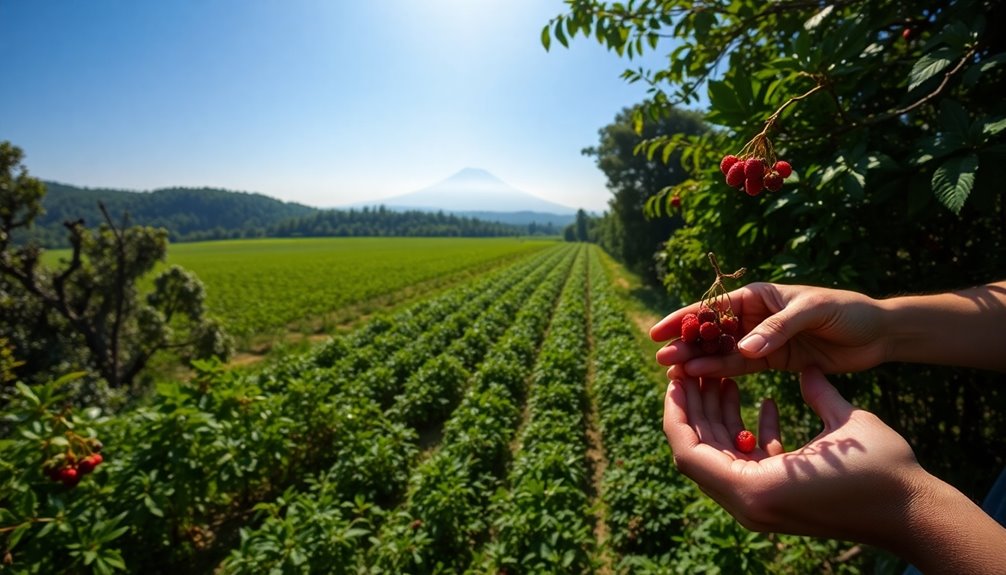
Recognizing the profound impact of environmental factors on subsistence strategies, you can see how foraging communities adapt to the resources available to them. As competition for food increases, these communities often face diminishing wild food resources due to environmental changes.
When resources become scarce, foragers may turn to agriculture to guarantee food security. This change reflects a response to the carrying capacity of their environment, which determines how many people can be sustained.
The Green Revolution, starting in the 1940s, is a striking example of how environmental challenges pushed societies to adopt modern farming techniques. High-yield crop varieties emerged to combat food shortages, showcasing how agricultural practices evolved under pressure.
Moreover, environmental interactions, like ecosystem destruction, have historically disadvantaged foraging communities. As they witnessed their habitats degrade, many felt compelled to embrace agricultural methods to secure their survival.
Ultimately, these shifts underscore the intricate relationship between environmental factors and subsistence strategies, illustrating how necessity drives adaptation in the face of competition and resource depletion. Additionally, foraging practices can be influenced by the availability of seasonal edibles, which varies significantly across different regions.
Anthropological Perspectives on Change
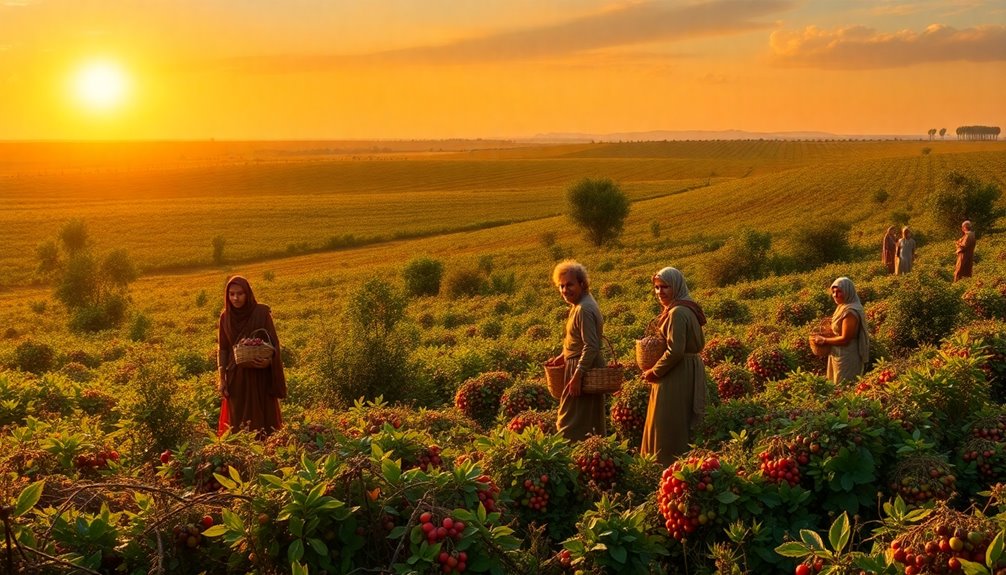
Historically, the change from foraging to agriculture showcases how societies adapt under pressure. As populations grow, competition for resources intensifies, pushing foragers to seek more reliable food sources. This transition isn't just about food; it reflects significant societal changes.
- Increased population density leads to greater competition for wild plant resources.
- Foraging communities often prioritize sharing, but agricultural practices can strain these relationships.
- Environmental pressures and a desire for food predictability drive the adoption of farming.
Anthropologists recognize that foraging has been our primary means of survival for over 90% of human history. However, the development of agricultural systems has transformed social structures and resource management.
When groups living near abundant resources began farming, they adapted culturally to embrace these new practices. This change reveals how external pressures, like competition, can reshape subsistence strategies.
Ultimately, understanding these anthropological perspectives helps clarify why some foragers transitioned to agriculture. By examining environmental interactions and cultural adaptations, we gain insights into humanity's complex relationship with food and survival.
Frequently Asked Questions
Why Did Humans Stop Foraging and Start Farming?
Humans stopped foraging and started farming mainly due to increasing population densities and competition for resources. As groups grew, foraging couldn't support larger communities, pushing you toward more stable food sources.
Farming allowed you to cultivate high-yield crops, ensuring a reliable food supply. This shift also fostered complex societies, enabling specialization of labor and more structured social organization, making agriculture a necessary evolution for sustaining your growing population and improving overall food security.
What Caused the Shift From Foraging to Farming?
Did you know that over 10,000 years ago, nearly 90% of human societies relied solely on foraging?
The shift to farming emerged as populations grew, leading to resource competition and the need for stable food supplies. You'd notice that cultivating crops like maize offered a more reliable source of nutrition.
This change also allowed you to settle down, fostering complex societies and enhancing food security in the face of environmental pressures.
Do Foragers Tend to Work Less to Survive Than Agriculturalists or Pastoralists?
Yes, foragers generally work less than agriculturalists or pastoralists to survive.
You'll find that foragers often spend around 20 hours a week gathering food, allowing for plenty of leisure time.
In contrast, agriculturalists typically work over 40 hours a week due to the demands of farming.
This difference highlights how foraging offers a more flexible lifestyle, while agriculture requires long hours and hard labor to guarantee food production for larger populations.
How Is Food Production as Opposed to Foraging Hunting and Gathering?
Imagine walking through a lush forest, gathering berries with ease. That's foraging—immediate and spontaneous.
In contrast, food production is like planting seeds in a garden, nurturing them, and waiting for a bountiful harvest. You invest time and effort into cultivating crops, which can yield more food over time.
While foraging offers quick rewards, agriculture requires patience and planning, ultimately providing a steadier, more reliable food source for growing populations.
Conclusion
In the grand tapestry of human history, foragers shifting to agriculture might seem puzzling, but it's often said that necessity is the mother of invention. As populations grew and environmental pressures mounted, you and your ancestors adapted, embracing farming for stability and sustenance. This shift shaped cultures and food preferences, illustrating how humans have always been resilient. So, whether you're foraging in the wild or tending crops, remember: change is the only constant in life.

